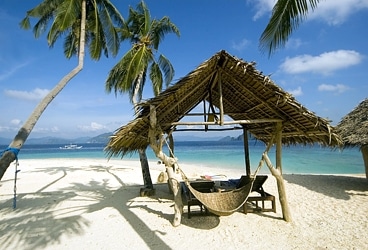Palawan Island: Best Island For Adventurous Souls
A less shiny, sexy destination that calls out to the wild at heart
Why Palawan?For those longing to (scuba) dive off the edge of the map and explore a pristine tropical paradise with Indiana Jones hat in hand, Palawan is just the place. The island's capital, Puerto Princesa, has gained international recognition for its environmental programs. The adventures that await outside the city are also impressive, including the Subterranean River National Park, Tubbataha Atoll coral reef, the beaches and limestone-karst cliffs of the Bacuit Archipelago and the island's expanse of jungle, which calls out to the wild at heart.
Life of an Expat "Our place is nothing at all like the shiny, sexy destinations that people usually write about," says Jim Williams who has lived on the island for over 20 years. "But it will appeal to a few adventurous souls." The fact that Palawan is off the beaten path is exactly what Jim likes about the island. "For me, the main attraction is the possibility of enjoying a natural setting privately, without the intrusion of crowds," he says. "I like that the roads leading out of town are so rough that I shift to four-wheel drive almost every day during the rainy season. We can quickly be in a place where we will not see another vehicle for days."
Jim knew he wanted to live on this rugged island ever since he was in the U.S. Air Force stationed in the Philippines in 1984. After working around the globe, Jim had a memorable visit to Palawan Island in 1991. "The place was unpolished, informal, and it had the feeling of a small town," he says. Some of the locals also seemed surprisingly familiar. "Older Palawenos maintain a certain aloofness along with a genuine hospitality that I can relate to, having grown up in rural Texas," Jim says.
He and his wife, May, who is from the Philippines, are now raising their five children. The couple owns five houses, each with a different view of the island: rice fields and coconut palms from the two farms; a river, forests, and terraced vegetable gardens from their mountain home; bamboo and a distant highway from their house in town. From their beach house they look out on a coconut grove and the South China Sea. Jim works as a project manager for a resort- development company. He also may start a business to help other expats buy or build property, as he sees increasing numbers of tourists discovering the island. "I was in El Nido in January, and the ratio of locals to foreigners in certain areas was 50:50," Jim says. "Foreigners have always been part of the social tapestry here."
The tourist town of El Nido on the island's northern coast attracts newcomers, but it's not Jim's favorite part of the island. "I am a west-coast guy. I prefer the rugged side of the island and the fact that there are few towns and roads there," Jim says. The more remote areas of Palawan Island feel much more like home to him. "As far as I know," he says, "this is my last move."
Facts of Life
- Climate: Tropical
- Population of island: 755,412
- Percentage expats: Less than 1 percent
- Population of main town, Puerto Princesa: 161,912
- House starting rents: $300 a month
- Travel from US: Fly to Manila, then take a 1.5-hour flight to Puerto Princesa.
- Closest hospital: Puerto Princesa
- Price of local beer: Less than $1 for a bottle of San Miguel
- Languages: English, Filipino, Cuyunon and others
- Ease of immigration: Medium
- Ease of buying a home: Difficult
- Website: palawantourism.com
Purchasing Paradise
- Rental or leased properties are the best option for foreigners looking to live on Palawan. Rent for a typical three-bedroom, two-bath house is about $400 a month.
Real-Estate Links
